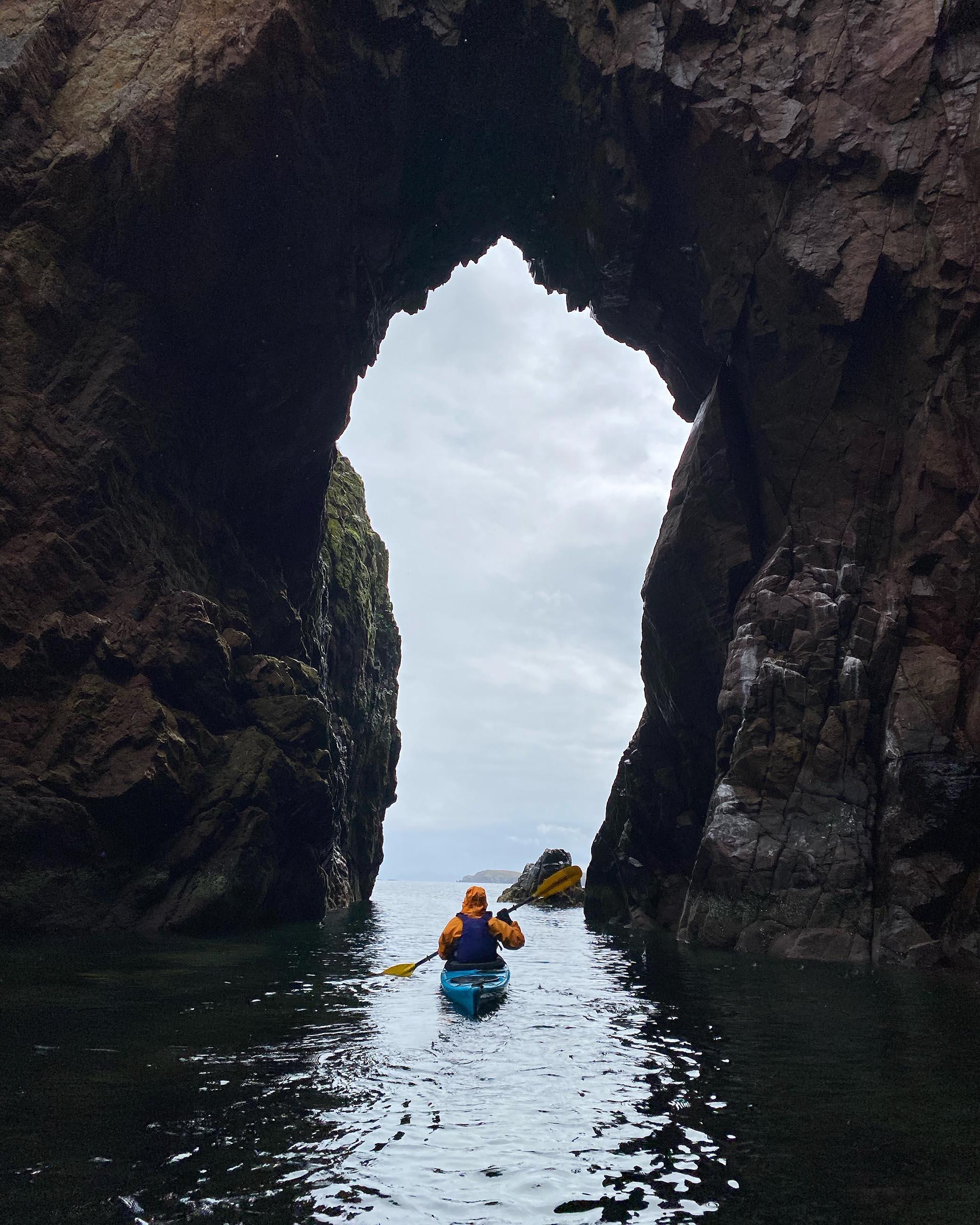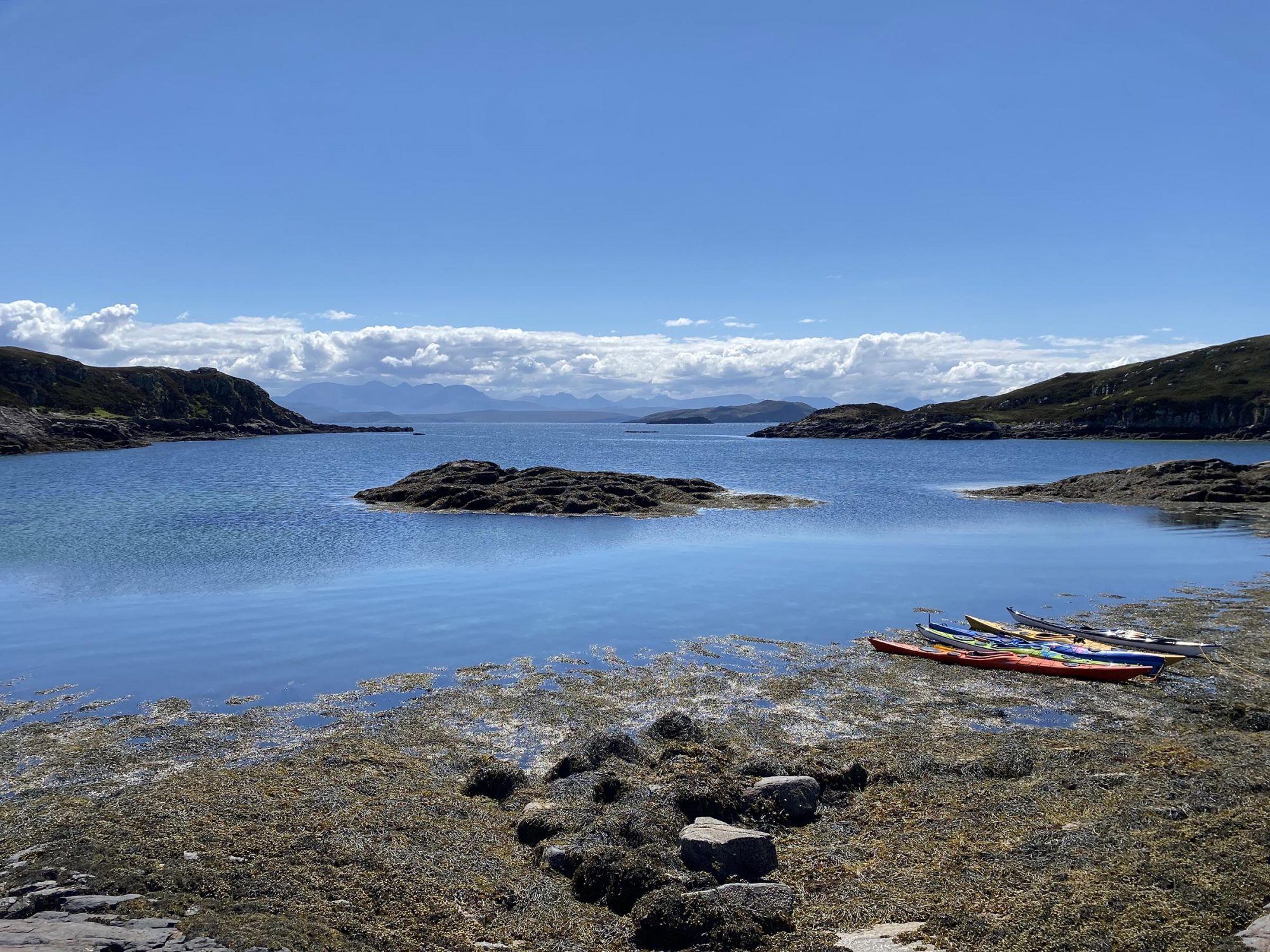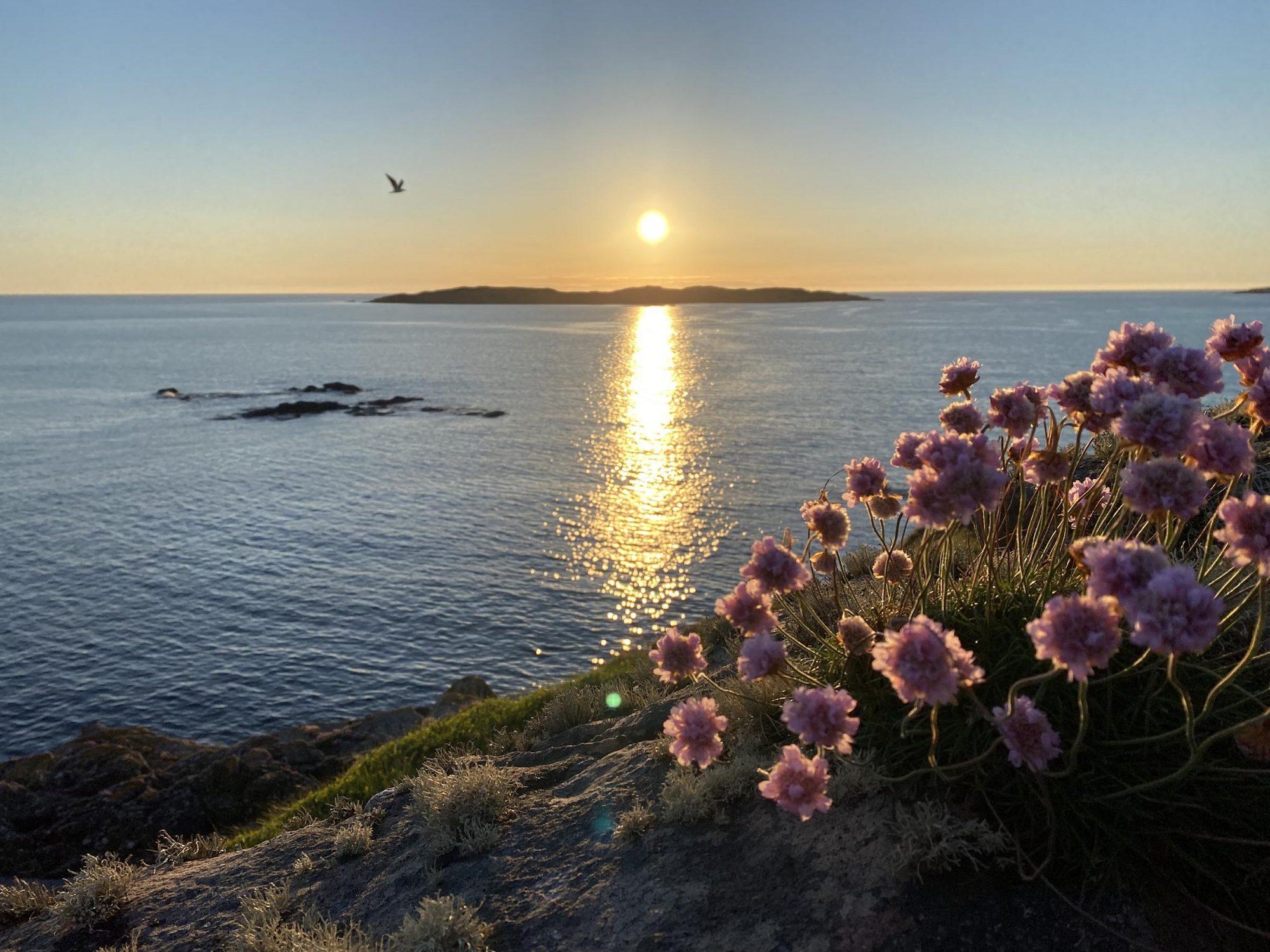In the far northwest corner of Scotland, just north of Ullapool, is a cluster of stunningly remote and rugged islands. Wikipedia reckons there are twenty-nine islands in the archipelago, but what’s unique is only one of these islands is inhabited by us humans. This leaves twenty-eight islands whose only occupants fly on the wing or live in the sea. Should you add the Summer Isles to your paddling tick list? Oh yes!
Tanera Mor
The largest and only inhabited island recently sold for £1.6 million, and rumours have it will become a wilderness retreat. Although, these islands have been a wilderness retreat for savvy sea kayakers for many years. Tanera Mòr has a rich history, home to the herring boom in the eighteenth century. It’s easy to imagine the large sheltered bay on the eastern side of the island bustling with boats. Centuries before the fishing industry, the Vikings made them home. The name Tanera is thought to derive from a Norwegian word meaning ‘shelter from heavy storm’. There are a handful of holiday cottages and a couple of fish farms, but that’s it.
Tanera Beag
Galic for little Tanera, this island has incredible red cliffs made from one billion-year-old Toridonian sandstone, and when lit by the setting sun, this island glows red. The island is covered in a thick blanket of grass, heather and peat bogs. Any water you collect around the islands will have a peaty colour like whisky. On my last expedition around Tanera Beag, we caught sight of a sea eagle on the steep north-facing cliffs. But the real gems of this little island is Cathedral Cave, you guessed it, a vast southwest-facing cave. Exposed to the elements, this cave is an exciting find, as is the red rock sea arch you have to look carefully to find. If you are paddling around spring tides, be sure to have lunch on the fantastic pink coral beaches, which only appear at low tide in the narrowing between Tanera Beag and Eileen Fada Mor.


Wild Camping
Landings will nearly always be rocky or bouldery on these rugged little islands, so be prepared with an Ikea bag to carry your kit up rocky shores and heathery hillocks. There are some of the best wild camps I’ve ever experienced on these little islands, just be a little adventurous to find them. The sunsets are unbelievable, and views across the archipelago are well worth a little hike to the top.
Water can be tricky to find, especially during a dry spell. However, there are plenty of streams on the mainland coast, and one tucked away on the northwest corner of Tanera Mòr. So be prepared to carry what you need or plan in water stops to your journey.

Wildlife
The islands come to life in May and June when the sea birds come in to nest. Can nan Sgeir becomes home to a feisty flock of nesting Turns and, as you paddle around the island, you might see a seal or two slip into the water. I’ve seen peregrine falcons nesting on the steep cliffs and the super rare red-throated diver feeding in the quiet sheltered bays between the islands. This summer, I spotted a sea eagle on the islands. Hopefully, they’ll make the islands home.

The Outer Isles
For those who enjoy open water crossings, the Summer Isles have them in abundance. For the first time this summer, I reached the furthest of the islands, Priest Island. This island is notoriously difficult to land on, with just a few slimy boulder beaches, but this also makes it a wildlife haven. Naturalist Dr Fraser Darling is thought to have given the island its name when he lived on the island in the 1930s and wrote the book Island Years.

I can’t recommend the Summer Isles enough. If you’re looking for a wild and remote adventure, these little islands will get you off the beaten track, rich in wildlife and history. There is so much to explore.